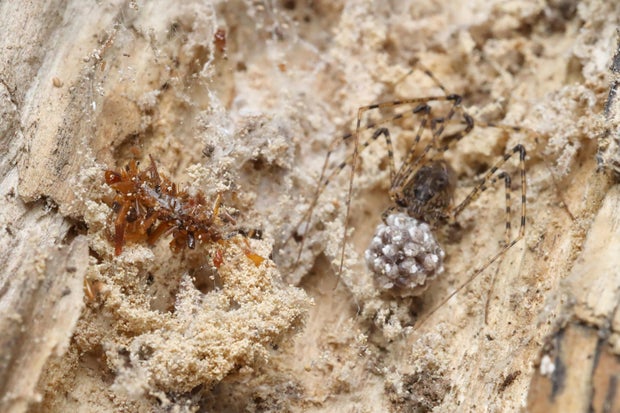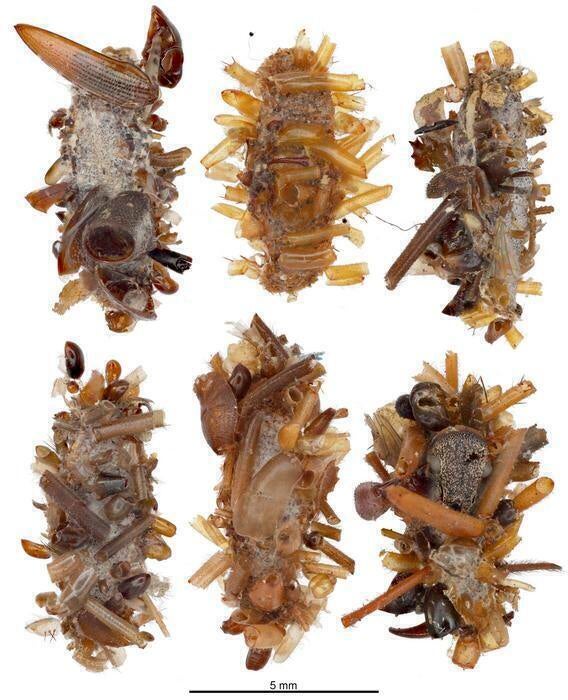A new carnivorous caterpillar that wears the remains of its prey has been dubbed the “bone collector.”
The insect is only found on the Hawaiian island of Oahu. It creeps along spiderwebs, feeding on trapped insects and adorning its silk case with their body parts.
In findings, published Thursday in the journal Science, researchers said the caterpillar “boasts an unprecedented and macabre practice of decorating its portable larval home with the body parts of the spider prey it harvests from the web where it resides.”
There are other meat-eating caterpillars that “do lots of crazy things, but this takes the cake,” said study author Dan Rubinoff with the University of Hawaii at Manoa.
AP
Scientists think the case might act as camouflage, allowing the caterpillar to feast on the spider’s ensnared meals without getting caught.
The “Bone Collector” was the name of Jeffery Deaver’s 1997 crime novel and subsequent 1999 movie starring Denzel Washington and Angelina Jolie.
“I think the term is out there in the ether, and just fit with what these caterpillars are doing. It’s a bit tongue in cheek because arthropods don’t actually have bones,” Rubinoff told the Reuters news agency.
A host of caterpillars native to Hawaii use silk glands to spin protective cases studded with lichen, sand and other materials. This one is the first to use ant heads and fly wings.
“It really is an astonishing type of case,” said Steven Montgomery, an entomology consultant in Hawaii who was not involved with the new study.
Scientists found just 62 of the carnivorous caterpillars in over 20 years of observing.
Predatory caterpillars are extremely rare and the bone collectors found in Hawaii will even eat each other, researchers said.
The bone collector’s origins date back at least 6 million years, making the caterpillars more than one million years older than the Hawaiian islands themselves. Today, they dwell on an isolated patch of mountain forest alongside invasive species.
The spider “is restricted to 15 square kilometers of a single mountain range on the island of Oʻahu, meaning that other members of the lineage have disappeared from older islands,” the scientists wrote.
Scientists urged conservation efforts to save the unique lineage.
“There is really a concern that we need to do better with conservation,” said Rubinoff.
AP



